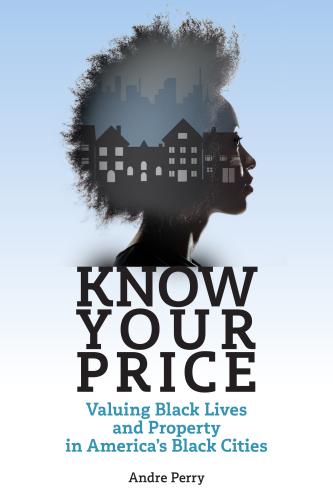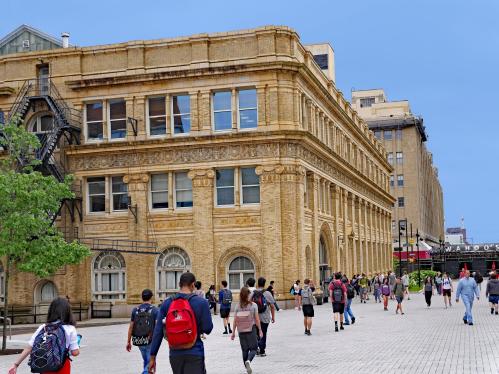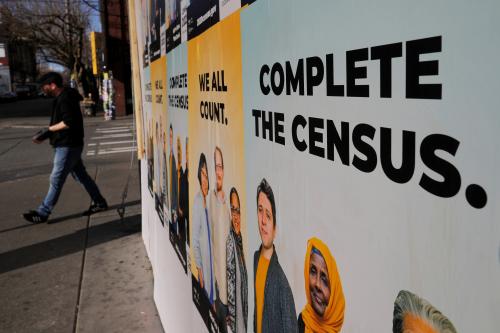On May 19, 107-year-old Viola Fletcher visited Washington, D.C. to testify before Congress in its hearing for the centennial of Tulsa, Okla. race massacre. “I’m here seeking justice and I’m asking my country to acknowledge what happened in Tulsa in 1921,” Fletcher, a survivor of the massacre, said.
2021 marks 100 years since the infamous 1921 massacre in Tulsa, in which white mobs unleashed violence against the city’s Black people, Black institutions, and Black wealth. An estimated 300 people were killed and approximately 35 acres of commercial and residential property within the Greenwood District—known as Black Wall Street—were destroyed.
In her testimony, Fletcher described what Greenwood had meant to its residents and detailed how she lives with the memories every day. “Our country may forget this history, but I cannot, I will not, and other survivors do not, and our descendants do not,” she told Congress.
The Tulsa massacre is only recently receiving the national recognition it needs. But even as the massacre itself becomes better known, much of the remaining story of Greenwood is still left untold. In particular, little attention is given to subsequent events in Tulsa, including the rebuilding of Greenwood by its Black residents, followed by its second destruction—this time at the hands of white city planners during the “urban renewal” period of the 1960s to 1980s.
In both periods of destruction, important Black capital that undergirded the community was lost, as were opportunities for wealth-building for Tulsa’s Black residents. To be clear, the loss of human life in the massacre is a horror beyond all calculation. But another important and often neglected dimension to this history is the devastating effects of destroyed communal wealth, which had supported the flourishing of the city’s Black residents.
In this analysis, we look at the estimated dollar amounts of lost wealth from the 1921 massacre, and consider what that collective wealth might be able to accomplish in contemporary Tulsa were that money still in circulation. Specifically, we look at what that collective wealth could accomplish in terms of financing college education, buying homes, and starting businesses.
Our goal is to provide a concrete way of understanding just how catastrophic the economic losses were for Black residents of Tulsa. This exercise reveals the devastating economic impact of racism on communities, and it also provides important justification for concrete reparations as a response to undeniable economic injustices.
A brief history of Tulsa’s lost wealth
In the years leading up to the massacre, Tulsa’s Greenwood District was a thriving hub of the Black middle class, featuring a robust local Black economy with money circulating between Black residents, Black banks, and Black businesses. As with similar famed places such as Memphis’ Beale Street, Greenwood was an enclave of Black flourishing at a time when the oppressive Jim Crow regime forced Black communities to generate and maintain their own capital, largely cut off from the broader macro economy. The Greenwood Cultural Center notes that this local economy had such good financial circulation that the average dollar would stay within the community’s network of households and firms for approximately 19 months before being spent elsewhere.
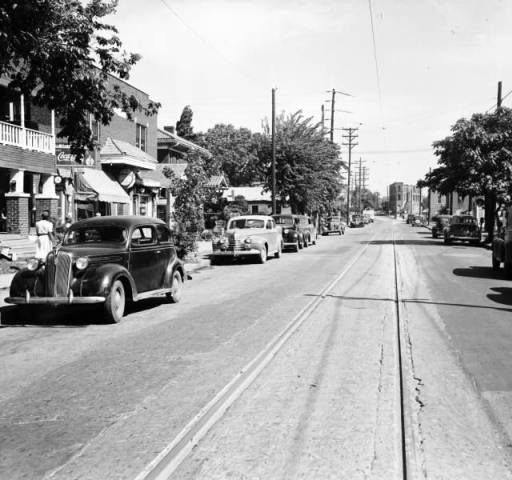
But Tulsa’s underlying social conditions were primed for racial violence, due in large part to the influence of the Ku Klux Klan and its prominent supporters. Greenwood was likely the richest Black community in the United States, and racist neighboring white communities perceived its economic flourishing as an existential threat.
The terrible events of 1921 began with trumped up rape charges against a Black resident, covered in sensationalist terms in the local white newspapers. This quickly led to threats of lynching and clashes between armed groups, specifically Black residents seeking to protect themselves and white groups seeking vigilante justice. On May 31, fraught interactions led to horrific violence that lasted for two straight days.
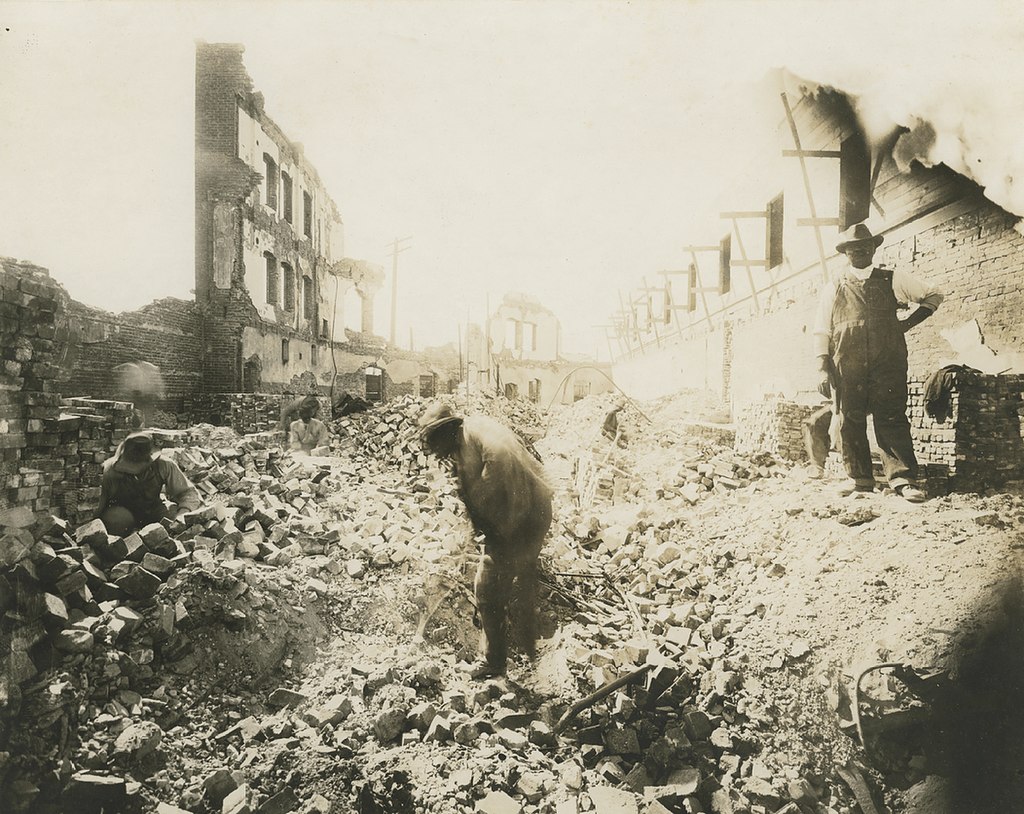
In the aftermath of the massacre, state and federal policymakers and the private sector were quick to describe the events as a “race riot,” which enabled them to avoid responsibility to help rebuild the district. Indeed, the Tulsa Historical Society and Museum explains that calling the massacre a “riot” was likely the pretext that insurance companies used to avoid paying out the compensation that property owners were otherwise due. The Greenwood Cultural Center notes that in addition to insurance claims being denied, the district did not receive any restitution or rebuilding money from the local, state, or federal government. In fact, the surrounding white communities were openly hostile to the prospect of rebuilding Greenwood, as evidenced by a Tulsa newspaper editorial that declared “the old ‘Niggertown’ must never be allowed in Tulsa again.”
Against all odds, Greenwood’s Black residents were able to pool their remaining resources to rebuild the district in just a few years, despite their lack of access to outside capital funds controlled by Jim Crow governments and banks. In 1925, only four years after the massacre, Greenwood hosted the National Conference of the National Negro Business League. The district continued to flourish throughout the 1940s; the Oklahoma Historical Society notes that during this period, the district “boasted 242 black-owned and black-operated business establishments.”
Despite the progress in rebuilding Greenwood, from the 1960s through 1980s, a series of choices by white city planners destroyed the district again—this time in the name of “urban renewal.” The urban renewal movement was devastating for Greenwood; as detailed by Human Rights Watch in their 2020 report recommending reparations, a mix of policies that included eminent domain, rezoning, and highway construction led to displacement and plunging property values, while racist redlining policies prevented the injection of new capital into the community.
Despite the heroic resiliency of Tulsa’s Black residents, the once thriving Black Wall Street could not ultimately withstand the sheer unrelenting force of white supremacy, expressed through both violence and, later, policy. In the words of contemporary Tulsa resident Brenda Nails-Alford, whose grandparents were displaced by the massacre, “Our community lost, through no fault of its own, twice.”
This loss is so staggering in terms of the built environment that despite the efforts of current residents, Greenwood is still denied appointment to the National Register of Historic Places, thus excluding the district from tax credits and other fiscal benefits that could bring in more investment.
Mapping the contemporary absence of Tulsa’s Black Wall Street
Today, there is no Black Wall Street in Tulsa, and only 3% of the metro area’s residents live in Black-majority neighborhoods. Given that the historic Greenwood District was esteemed for its financial systems and services, we wanted to show how the massacre still impacts the district 100 years later through loss of Black economic power and changes in the Black workforce.
The map below shows a typology of neighborhoods in the Tulsa metro area. “Black-majority” indicates a community with Black population share greater than 50%; “Black-minority” indicates a Black population share less than 10%; and “integrated community” is between 10% and 50% Black. A “financial hub” designation indicates that the neighborhood has a high share (in the top third) of jobs in the finance, insurance, and real estate (FIRE) industries.

This map illustrates that Tulsans in Black-majority neighborhoods are largely shut out of jobs in financial firms and institutions. Unlike the Black Wall Street era, there is less self-sustaining Black ownership of institutional financial firms, and significantly less participation of workers in Black-majority communities in the financial institutions that direct capital flows.
Given this reality, it is not surprising that we find (detailed in a forthcoming report) that while Black people comprise 10% of the Tulsa metropolitan population, Black-owned businesses comprise only 1.25% of the area’s nearly 20,000 businesses. Without direct connection to sources of capital investment and loans, Tulsa’s Black residents and communities face barriers to creating and expanding businesses, and thus also face barriers to the personal and communal wealth that business ownership can create.
Today, Black residents in Tulsa are heavily concentrated in North Tulsa, reflecting the widespread displacement of Black residents during the urban renewal decades. Human Rights Watch has detailed various racial disparities in education, job opportunities, and wealth between North and South Tulsa, writing that “over one-third of people living in North Tulsa are below the poverty line, and 35.7 percent are black.” Meanwhile, “just 13.4 percent of South Tulsans are below the poverty line, and only 9.1 percent of South Tulsans are black.” In keeping with our analysis, Human Rights Watch also shares findings showing that North Tulsa has fewer businesses (including grocers) and more abandoned or dilapidated buildings, as well as fewer banks and more payday lenders.
Clearly, the economic consequences of the destruction of Tulsa’s Black Wall Street can still be felt today, in the notable absences described above. But to get a sense of just how much wealth was lost, below we also look at estimations of dollar amounts lost in the 1921 massacre.
Estimating Tulsa’s destroyed Black wealth
There has been little academic work to quantify the economic harm Tulsa’s Black residents experienced. It is imperative that more scholars fill in the gaps.
According to a 2001 report by the Oklahoma Commission to Study the Tulsa Race Riot of 1921, at least 1,256 homes were destroyed, alongside churches, schools, businesses, and hospitals. Greenwood residents would go on to file over $1.8 million dollars in damage claims; in today’s dollars, this would be over $27 million. All but one of these claims were denied; a white shop owner was given compensation for guns taken from his shop. The report acknowledges, however, that not all residents took out insurance or filed claims.
A 2018 article in the American Journal of Economics and Sociology estimates the direct financial impact of the 1921 massacre. “If 1,200 median priced houses in Tulsa were destroyed today, the loss would be around $150 million,” the researchers wrote. “The additional loss of other assets, including cash, personal belongings, and commercial property, might bring the total to over $200 million.”
A recent analysis of census data has provided another way of understanding the economic harms of the massacre. In an article for The Atlantic, the authors write that before the massacre, Black residents were doing better than in comparable cities in the region, and that the massacre negatively impacted home ownership, marriage, wages, and employment in the subsequent decades.
Taken together, these studies help to reveal not only the economic loss of what once was, but also the economic loss of what might have been. To bring those numbers to life, let’s analyze what that lost wealth could pay for today in terms or financing college education, buying homes, and starting businesses.
What reparations for Tulsa’s lost wealth could pay for today
For the sake of simplicity, let’s stick with the American Journal of Economics and Sociology’s estimate of what Tulsa’s destroyed homes and property would be valued at today: $200 million. If restored to the community in the form of reparations, what could that lost wealth pay for today?
That $200 million could fully fund the college education of a large number of Black residents in Tulsa. In the table below, we used the estimated average cost of attendance (after the standard aid package is applied, according to Department of Education data) at three Tulsa universities to determine how many Tulsa students could receive a fully funded college education. We then used an estimated average cost of student loan borrowing in Oklahoma as well as the estimated national student debt average for Black students to provide low-end estimates on the amount of collective debt that would be avoided by these funded students.

A potential housing reparations package should consider that the 1921 massacre and the urban renewal period significantly decreased Black homeownership in Tulsa, and today, homes in the metro area’s Black-majority neighborhoods are valued 40% less than similar homes in non-Black neighborhoods. If a thriving Black middle class had continued in Tulsa, Black homeowners might have seen their homes and neighborhoods valued equitably. While 1,200 (the number of homes destroyed in 1921, according to the Oklahoma Commission) median-priced homes in Tulsa amount to $150 million, 1,200 median-priced homes in Tulsa’s Black-majority neighborhoods today amount to only $57 million because of devaluation.
There is a deep connection between the history of racial violence and contemporary racial devaluation. Without the historical violence, it is quite possible that the extent of the devaluation of Black-majority neighborhoods could have been reduced or even eliminated. So, when calculating value of lost homes, it does not make sense to use the current median home price of Black-majority neighborhoods, where values are influenced by the harm of past violence. Instead, we must use the city’s median home price.
Therefore, a $200 million housing reparations package could buy 4,187 median-priced homes in Black-majority neighborhoods. The reparations package could allow renters to become homeowners and homeowners to invest in their properties, similar to the proposal in Evanston, Ill.
Earlier, we mentioned our forthcoming report showing that Black-owned businesses account for only 1.25% of the Tulsa metro area’s nearly 20,000 businesses. That report will also show that if Black people in Tulsa owned a representative share of the area’s businesses, there would be nearly 1,900 new Black businesses with potential revenues of over $10 billion per year.
Given that Black-owned and -leveraged capital was central to Greenwood’s Black business ecosystem, reparations should incorporate support for Black entrepreneurs in Tulsa who wish to create or expand businesses. A 2009 study found that it costs an average of $31,150 to start a business from scratch. With a $200 million entrepreneurial reparations fund for startup capital for Black entrepreneurs, Black Tulsans could start 6,421 businesses. This would more than make up for Black underrepresentation in business ownership in the Tulsa metro area.
As underscored by Viola Fletcher’s testimony before Congress, the horrors of white supremacy that destroyed Greenwood are neither long distant nor forgotten. While we cannot undue the destruction of the past, we can and should implement reparations as a way of closing the racial wealth gap by injecting capital investments to fund college degrees leading to higher wages, home purchases leading to familial wealth creation, and the creation of businesses leading to jobs and communal wealth.




